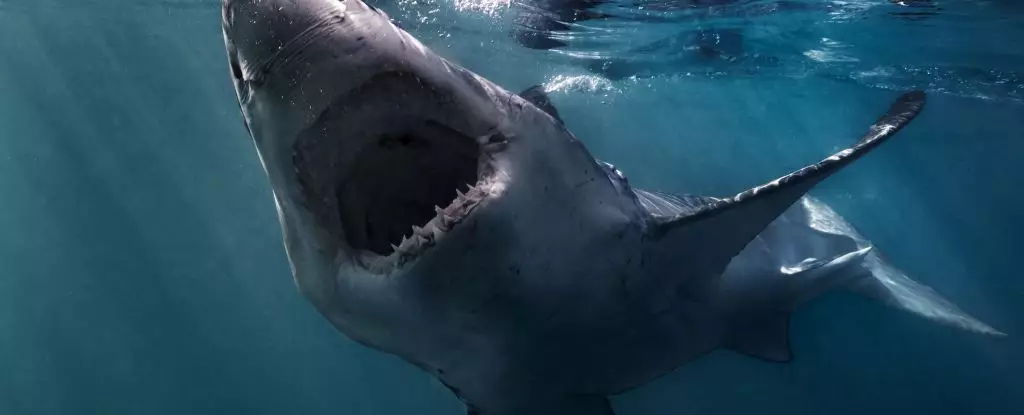In the waters of Bermuda, a pregnant porbeagle met a tragic end at the jaws of a larger predator. The grim fate of this shark was only revealed through the data collected by a satellite tag that was attached to her. Marine biologist Brooke Anderson of Arizona State University was stunned when she analyzed the temperature data from the tag, which pointed to the only logical conclusion that the pregnant porbeagle had been consumed by a larger shark. This incident sheds light on the harsh reality of shark-on-shark predation, a phenomenon that is rarely witnessed in the wild.
Porbeagles, also known as Lamna nasus, are mackerel sharks that are facing a concerning decline in their population numbers. These sharks, which can grow up to over 3 meters in length and live for several decades, have a slow reproductive cycle that makes them highly vulnerable to threats such as overfishing and accidental bycatch. Female porbeagles reach reproductive maturity at around 13 years of age and give birth to litters of pups every year or two. The loss of a pregnant porbeagle not only affects her own survival but also impacts the potential future generation of the species.
To better understand the behavior and movements of porbeagles, Anderson and her team utilized pop-off satellite tags to track the sharks in the North Atlantic Ocean. These tags provided detailed information about the depth, temperature, and location of the sharks, allowing researchers to monitor their activities remotely. The data collected from the tagged porbeagle revealed a sudden increase in temperature at a consistent depth, indicating a predatory encounter with a larger shark. This technology has been instrumental in unraveling the mysteries of marine species and uncovering hidden behaviors that were previously unknown.
An Overlooked Threat
The discovery of shark predation on a pregnant porbeagle highlights a potentially overlooked threat to the survival of these animals. While cannibalistic behavior among large sharks is not unheard of, it is rarely observed in the wild. The loss of multiple sharks in a single predation event raises concerns about the impact of such encounters on the porbeagle population. By tagging more porbeagles and other shark species, researchers can gain valuable insights into the frequency of these interactions and assess their significance in the overall conservation efforts for these vulnerable marine animals.
Anderson emphasizes the importance of continuing to study the behavior of porbeagles and other sharks to uncover hidden threats and conservation challenges. By expanding the use of satellite tagging technologies and tracking more individuals in the open ocean, researchers can shed light on the migratory patterns, feeding behaviors, and predator-prey interactions of these elusive marine predators. Understanding the complex dynamics of shark populations is crucial for developing effective conservation strategies and ensuring the long-term survival of these magnificent creatures in our oceans.

Leave a Reply